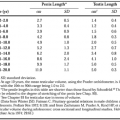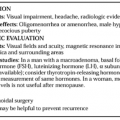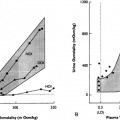CRANIOPHARYNGIOMA
Craniopharyngiomas have challenged neurologists and neurosurgeons since these tumors were first described in 1903.54 With advances in microsurgical technique, the thought was that the total removal of these lesions would be achieved more readily. Although the results of such surgery have improved, most surgeons continue to find this procedure extremely difficult and fraught with morbidity and mortality. Subtotal removal often is the best that can be achieved, even with advanced microsurgical technology and superlative surgical skill.55 Considerable debate exists about the surgical philosophy regarding craniopharyngioma: radical total removal in most cases versus a procedure that is more conservative and attempts to remove as much tumor as is possible, with the surgeon terminating the procedure when dense adherence to important neural or vascular structures is encountered. The problem is further complicated by the fact that adult and childhood craniopharyngiomas probably are different in this regard. That is, total removal is more easily achieved in children because the tumor has been present for a shorter period of time and, therefore, produces less inflammatory and gliotic reaction. In some cases total removal can be achieved with minimal morbidity, whereas in others such removal is not possible without damaging surrounding vital structures. Some of these neoplasms are densely adherent to the optic nerves, hypothalamus, and internal carotid artery; in these cases, an aggressive approach can produce a devastating outcome, even in the most experienced hands.
Radiation therapy plays an important adjunctive role in the treatment of this lesion. The MRI scan has been beneficial in resolving the controversy concerning which patients should undergo radiation therapy. Those patients with residual or recurrent tumor usually can be distinguished from those who have a clean surgical removal. Surgical intervention plus radiation therapy yield superior results compared with surgery alone in patients with obvious recurrent or residual tumor. This may be because the cells producing the secretions that form the cyst of this tumor have their secretory character altered by therapy. Therefore, radiation therapy is mandatory for optimal treatment of most incompletely removed tumors (see Chap. 22).
Stay updated, free articles. Join our Telegram channel

Full access? Get Clinical Tree







